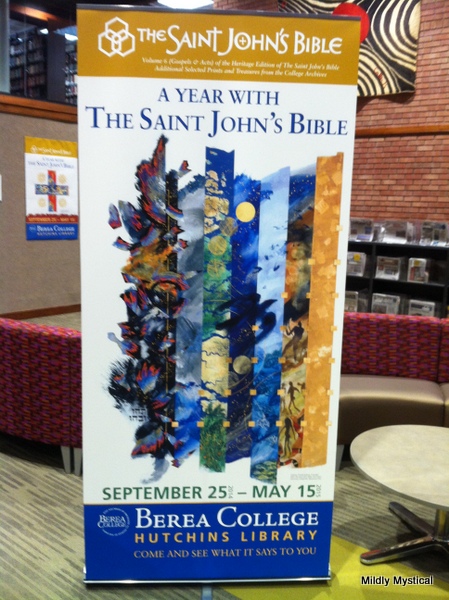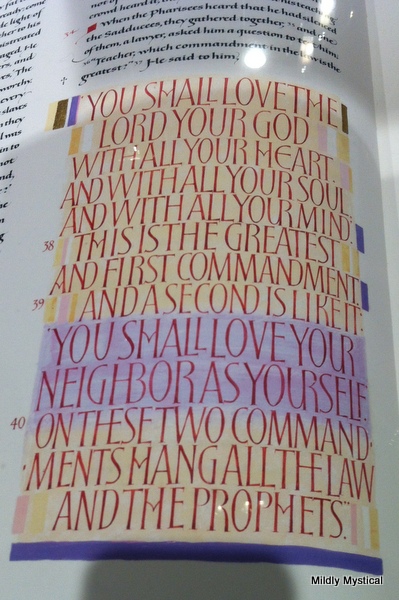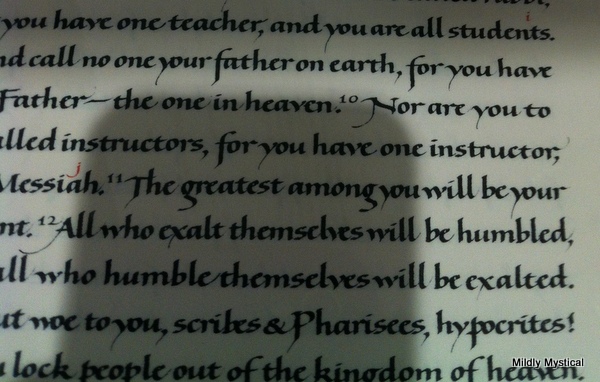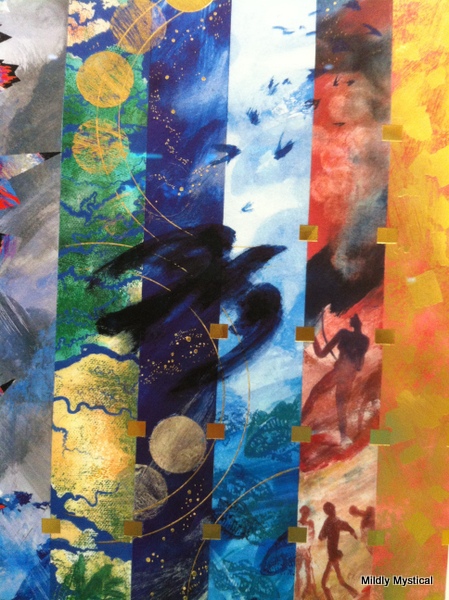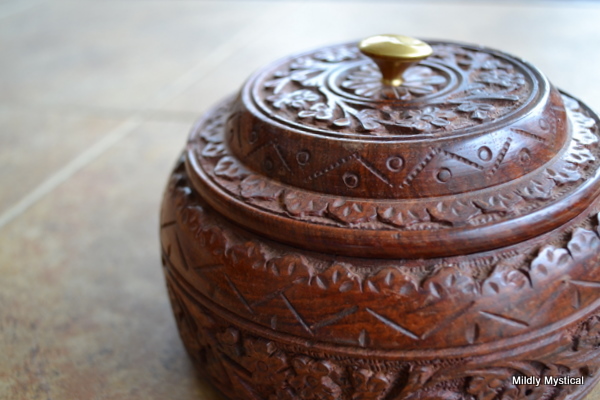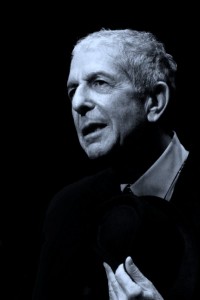Handwriting is more of an archaic art all the time—we even have apps for keeping our grocery lists. But as a calligrapher and as someone who loves books, I remain inspired by those monks of centuries past. They lit a candle in the dark ages, toiling away in their scriptoriums to copy manuscripts by hand. Their work was their answer to the question of what must be preserved, and what deserves to endure.
Today we are long past relying on scribes to copy out manuscripts, which makes the St. John’s University commission of a hand-lettered edition of the Bible all the more remarkable. Commissioned in 1998 and completed in 2011, it is a new work of calligraphy on a scale not seen for centuries. Even more exciting is that the volume containing the gospels is on display at the Berea College library during this academic year. The book is under glass, but five days a week it is turned to a new page.
From the design of the book to the life in every line of the handwritten text and the artistic rendering of beloved passages, the work is beautiful. It brings together art, design, calligraphy, history, language, religion, and spirituality, yielding a result that elevates each of these realms. Donald Jackson, the Artistic Director of the project, said, “The continuous process of remaining open and accepting of what may reveal itself through hand and heart on a crafted page is the closest I have ever come to God.”
There is something about the willingness to undertake such a massive project that is beautiful, as well. Enormous coordination of effort and the resources required might be expected for the construction of a building or the making of a major film, but such largess is like breaking open the alabaster jar when lavished on rendering the written word. This project affirms both the unique value of these long-preserved scriptures and the power of words on paper.
Seeing this beautiful manuscript is a reminder of the ability of the written word to preserve and connect. Writing has long been a conduit for energy and inspiration to flow from one era to another, from one person to another, across vast expanses of time, geography, and culture.
Life was breathed into these words when they were first spoken, and into their recounting by those who recited them later. Life was poured into the lines by the writer’s hand and with each scribe’s individual pen strokes. Each step of the way, the energy of an individual person, expended in a singular place and time, created the link between the past and present. The technology that allows us to easily disseminate words and images is a wonderful tool, but technology also makes it easy to forget the individual people behind all our communication.
Words matter. Ideas matter. What we say, what we remember, what we write matters. As we live out our lives, linking the past to the future, we serve in the same role as those ancient scribes. We don’t use quill and ink, perhaps not even paper, but we play our part in preserving and communicating those things worth passing on. We have new tools, but the same task.
What text shall we hand down?


